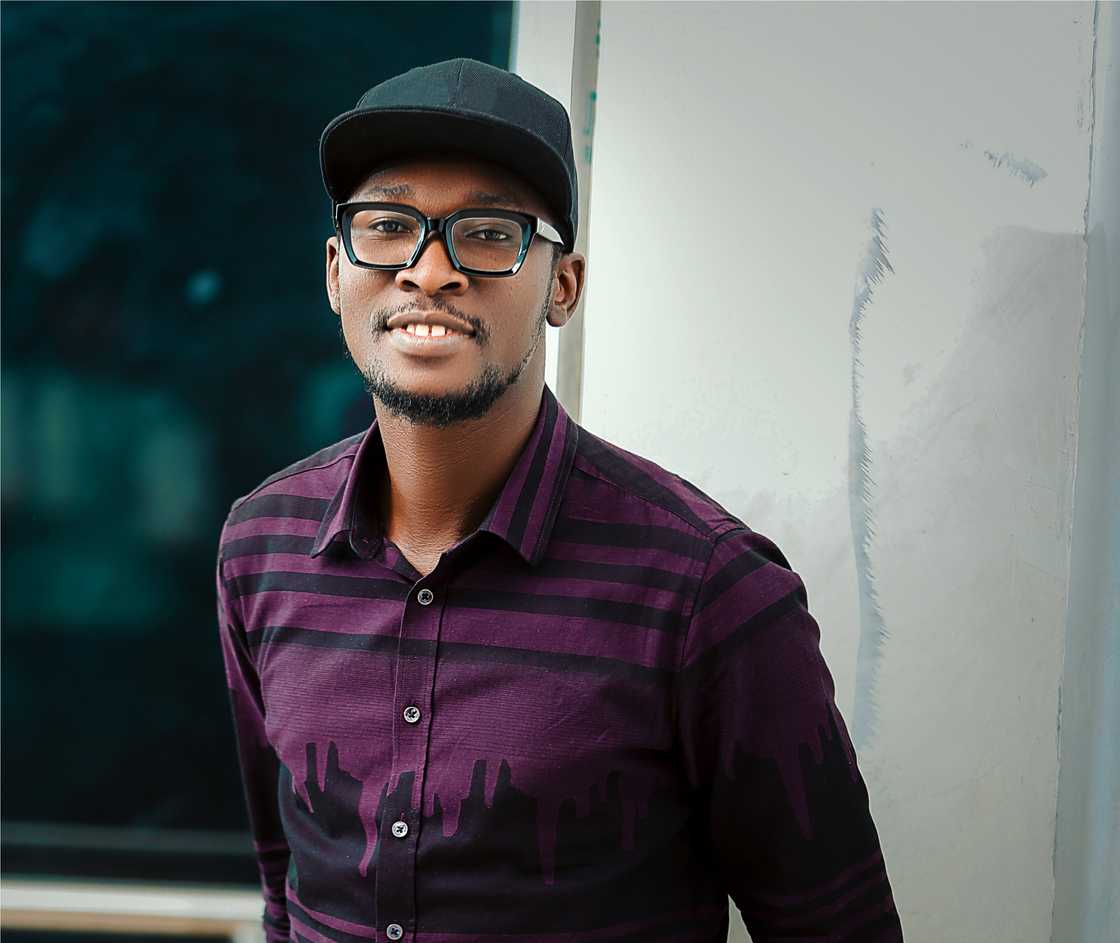Design is How We Solve for the Future - A Conversation with Youngdi Azomor
Introduction:
In a time where online experiences shape how we live, work, and connect, the minds behind user-friendly websites and intuitive applications are more important than ever. One of such minds is Youngdi Azomor, a seasoned website designer and UI/UX expert whose journey began before UX became a buzzword in Africa.

Source: UGC
Born in Lagos state, raised in Port Harcourt, and originally from Delta state, Youngdi’s path to digital creativity started in the early 2000s with tools many no longer remember, like Yahoo GeoCities and Macromedia. What started as a discovery soon evolved into a purposeful career of problem-solving through design. Today, he’s not just building websites, he’s designing digital experiences that work for real people in real-world African contexts.
We sat down with Youngdi to talk about his journey, inspiration, and thoughts on design’s role in Africa’s future.
Q1: Youngdi, tell us a bit about yourself. What were your early influences growing up?
Youngdi Azomor:
I was born in Lagos, but I spent most of my childhood and education in Port
Harcourt. I’m originally from Delta State, so I was raised across a blend of cultures and cities. which made me adaptable and curious.
One of my biggest influences was actually my dad. He was a very disciplined and forward-thinking man, always encouraging to push boundaries. He didn’t work in tech, but he instilled in me the mindset to figure things out on my own and to never settle for less than excellence.
Early on, I was fascinated by how things worked. The internet, websites and visuals. That curiosity eventually became a passion for me, especially when I realised I could build things digitally that others could see and use.
Q2: Who are you beyond the work? What drives you personally?
Youngdi Azomor:
Beyond the screens, wireframes, and user flows, I’m just a guy who’s deeply curious about life and how things connect people, cultures, and ideas. I’m someone who values growth, not just professionally, but as a person. I love quiet moments of reflection, meaningful conversations, and watching how small ideas can evolve into something that impacts lives. I’ve always been drawn to figuring things out, and I’ve always wanted to understand the WHY behind the WHAT.
What drives me personally is purpose the idea that what I do should leave a mark, even if it's just inspiring one person to believe in themselves. I'm driven by the stories we tell through design, and how we can use technology to make life better, simpler, and more human.
Q3: When did you first discover your passion for web design?
Youngdi Azomor:
It all began in the early 2000s when I was still in school. I stumbled on Yahoo GeoCities with some friends and was blown away that I could create something and the world could see it. That curiosity led me to explore tools like Microsoft FrontPage and HTML I even kept a notebook filled with handwritten code.
Later, I discovered Macromedia, which gave me more control over layout and structure. When Adobe took over and launched Muse, it opened a new chapter for me. As tools like Adobe XD and Figma emerged, I naturally transitioned, and each one sharpened my skills. What started as curiosity became a passion, and today, that journey has shaped me into a versatile UI/UX designer.
Q4: What was the transition like from traditional web design to UI/UX design?
Youngdi:
The transition was gradual. Traditional web design was more about putting things on a page. UI/UX, on the other hand, is about putting the right things on a page, in the right way, for the right people. It’s psychological and intentional. My background in traditional design helped, but I had to shift from visual thinking to experience thinking, asking questions like, How does the user feel at this point?
That shift was essential.
Q5: How would you define UI/UX design in your own words?
Youngdi:
To me, UI/UX design is storytelling with functionality. It's about understanding human behaviour and translating that into intuitive, beautiful, and purposeful digital experiences. It's not just about how something looks, it's about how it works, feels, and connects emotionally with people.
Q6: How would you describe your design philosophy today?
Youngdi:
Design, for me, is about solving problems simply and beautifully. I believe good design doesn’t just look good, it works, it guides, it listens. My philosophy is rooted in empathy, understanding what users need and helping them achieve it with as little friction as possible. Functionality should never suffer for style, and vice versa.
Q7: What kinds of challenges do you think African designers face that others may not?
Youngdi:
We deal with a unique blend of challenges, limited infrastructure, low digital literacy, and cultural diversity that demands hyper-local solutions. You can’t just copy global designs and expect them to work here. Africa needs designers who understand the people, not just the pixels. But the silver lining is that these challenges push us to innovate faster and smarter.
Q8: How do you stay updated in such a fast-changing tech world?
Youngdi:
Honestly, curiosity is my biggest tool. I follow UI/UX communities and trainings, and constantly explore new platforms. also watching how real people interact with technology. I also spend a lot of time exploring new tools, watching Videos and reading design case studies, and reworking old projects just for fun. The hunger to learn never leaves.
Q9: What role do you think design plays in shaping Africa’s digital future?
Youngdi:
Design is the bridge between innovation and accessibility. You can have the best product in the world, but if people don’t know how to use it, it’s useless. Africa is going digital fast, but we need designs that meet people where they are. Design makes the complex simple, the distant reachable, and the digital human.
Q10: What are some of your favourite tools right now?
Youngdi:
Definitely Figma and Adobe XD. Figma, in particular, is great for collaboration and prototyping. It gives me freedom and flexibility. I also enjoy using Framer for interaction design. But beyond tools, it’s about knowing when and how to use them effectively.
Q11: What’s your creative process like when you start a new design project?
Youngdi:
I start by understanding the problem. I ask questions, research the audience, and even do quick interviews if possible. Then I create wireframes, test some flows, and move to high fidelity design. Feedback loops are critical. I believe design should be a conversation, not a monologue.
Q12: What excites you most about being a UI/UX designer today?
Youngdi:
I love that design today is no longer about pixels, it’s about people. It’s exciting to work at the intersection of emotion, technology, and function. I get to shape how people interact with the world, solve problems creatively, and help brands and users meet each other halfway. For me, that’s powerful.
Q13: What’s the most underrated skill in UI/UX design today?
Youngdi:
Listening. Most designers jump into tools and trends, but rarely do they pause to really listen to clients, users, feedback, and even silence. The best ideas come from paying attention. Also, storytelling is underrated. If your design tells a clear story, users will follow.
Q14: How do you see the future of design in Africa?
Youngdi:
Design in Africa is entering a golden age. We’re seeing more local talents solving local problems with global standards. I believe in the power of African storytelling through digital experiences. As internet access improves and more people come online, our designers will play a key role in shaping culture and commerce.
Q15: Can you tell us about some of the awards you’ve received over the years?
Youngdi:
I've been lucky to receive a few recognitions over the years that really mean a lot to me. Back in 2014, I was named Creative Entrepreneur of the Year by the Lagos Fashion Awards, which was a huge moment for me. The following year, I received a Special Recognition for the Creative Brand Award at the Tourism & Style Awards. Then in 2018, things really picked up. I was honoured with the Creative Young Entrepreneur of the Year by Starzz Awards, and also recognised as Male Personality of the Year by the Nigeria Glam Awards. More recently, in 2024, I was nominated for Tech Entrepreneur of the Year at the Man of Honour Awards. Each of these milestones reminds me to keep innovating and pushing the limits of what’s possible.
Q16: If you weren’t doing design, what would you be doing?
Youngdi:
That’s a tough one because design feels like my DNA now. But if I had to choose, maybe film. I love helping people see things differently. I think, deep down, I’m always going to be a storyteller, whether it’s through visuals, interfaces, or conversations like this one.
Q17: Finally, if design is how we solve for the future, what’s your vision for that future?
Youngdi:
My vision is an Africa where design is not an afterthought but a starting point. Where every government service, business, or platform is user-centred. I see a future where African designers are not just following global trends but setting them, creating interfaces that solve uniquely African problems with global relevance.
That’s the future I’m designing for.
[Sponsored]
Source: Legit.ng


